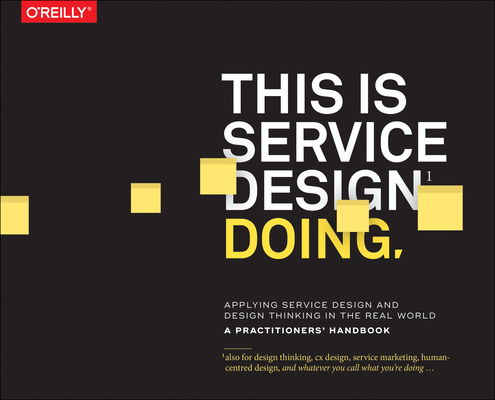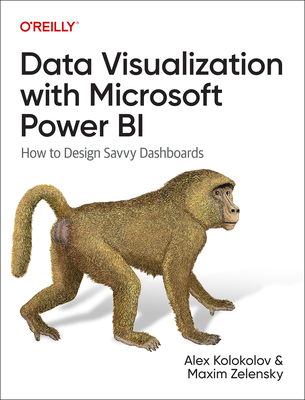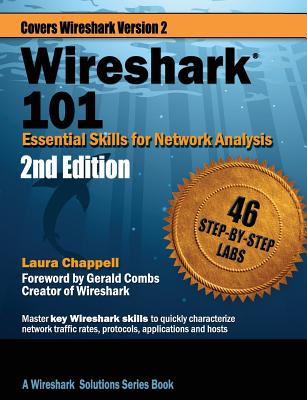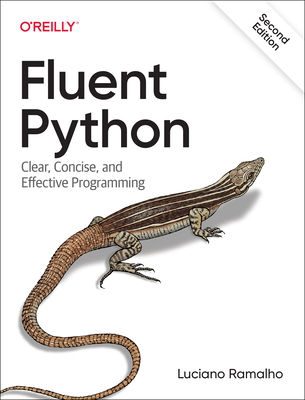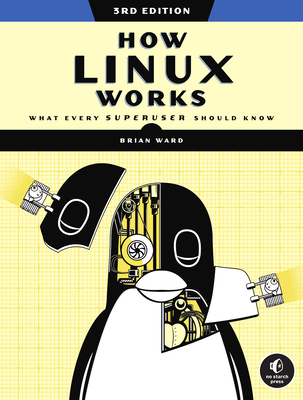Microsoft Certified - Azure Solutions Architect Expert Boot Camp Training in Tuscaloosa
Enroll in or hire us to teach our Microsoft Certified - Azure Solutions Architect Expert Boot Camp class in Tuscaloosa, Alabama by calling us @303.377.6176. Like all HSG
classes, Microsoft Certified - Azure Solutions Architect Expert Boot Camp may be offered either onsite or via instructor led virtual training. Consider looking at our public training schedule to see if it
is scheduled: Public Training Classes
Provided there are enough attendees, Microsoft Certified - Azure Solutions Architect Expert Boot Camp may be taught at one of our local training facilities.
|
We offer private customized training for groups of 3 or more attendees.
|
||
Course Description |
||
| This boot camp is geared towards providing students with the necessary skills and knowledge to not only pass the Microsoft Certification exams, but to also excel in their IT career paths.
Course Length: 6 Days
Course Tuition: $3200 (US) |
||
Prerequisites |
|
| It is recommended that you first familiarize with the skills of a Microsoft Certified Azure Administrator Associate and a Microsoft Certified Azure Developer Associate. | |
Course Outline |
|
Exams Included:
Exam AZ-300: Microsoft Azure Architect Technologies
Exam AZ-301: Microsoft Azure Architect Design
- 100% Test Pass Guarantee
- All course materials, practice exams and official certification exams
- Onsite Prometric Testing Center
- Hands-on instruction by a certified instructor
- Breakfast and Lunch provided each day
- Airfare, lodging and transportation packages available (Option 2)
AZ-300 Section
Deploy and Configure Infrastructure
Analyze resource utilization and consumption
May include but not limited to: Configure diagnostic settings on resources; create baseline for resources; create and rest alerts; analyze alerts across subscription; analyze metrics across subscription; create action groups; monitor for unused resources; monitor spend; report on spend; utilize Log Search query functions; view alerts in Azure Monitor logs
Create and configure storage accounts
May include but not limited to: Configure network access to the storage account; create and configure storage account; generate shared access signature; install and use Azure Storage Explorer; manage access keys; monitor activity log by using Azure Monitor logs; implement Azure storage replication
Create and configure a Virtual Machine (VM) for Windows and Linux
May include but not limited to: Configure high availability; configure monitoring, networking, storage, and virtual machine size; deploy and configure scale sets
Automate deployment of Virtual Machines (VMs)
May include but not limited to: Modify Azure Resource Manager template; configure location of new VMs; configure VHD template; deploy from template; save a deployment as an Azure Resource Manager template; deploy Windows and Linux VMs
Implement solutions that use virtual machines (VM)
May include but not limited to: Provision VMs; create Azure Resource Manager templates; configure Azure Disk Encryption for VMs
Create connectivity between virtual networks
May include but not limited to: Create and configure VNET peering; create and configure VNET to VNET; verify virtual network connectivity; create virtual network gateway
Implement and manage virtual networking
May include but not limited to: Configure private and public IP addresses, network routes, network interface, subnets, and virtual network
Manage Azure Active Directory (AD)
May include but not limited to: Add custom domains; configure Azure AD Identity Protection, Azure AD Join, and Enterprise State Roaming; configure self-service password reset; implement conditional access policies; manage multiple directories; perform an access review
Implement and manage hybrid identities
May include but not limited to: Install and configure Azure AD Connect; configure federation and single sign-on; manage Azure AD Connect; manage password sync and writeback
Implement Workloads and Security
Migrate servers to Azure
May include but not limited to: Migrate by using Azure Site Recovery; migrate using P2V; configure storage; create a backup vault; prepare source and target environments; backup and restore data; deploy Azure Site Recovery agent; prepare virtual network
Configure serverless computing
May include but not limited to: Create and manage objects; manage a Logic App resource; manage Azure Function app settings; manage Event Grid; manage Service Bus
Implement application load balancing
May include but not limited to: Configure application gateway and load balancing rules; implement front end IP configurations; manage application load balancing
Integrate on-premises network with Azure virtual network
May include but not limited to: Create and configure Azure VPN Gateway; create and configure site to site VPN; configure ExpressRoute; verify on-premises connectivity; manage on-premises connectivity with Azure
Manage role-based access control (RBAC)
May include but not limited to: Create a custom role; configure access to Azure resources by assigning roles; configure management access to Azure; troubleshoot RBAC; implement RBAC policies; assign RBAC roles
Implement Multi-Factor Authentication (MFA)
May include but not limited to: Enable MFA for an Azure tenant; configure user accounts for MFA; configure fraud alerts; configure bypass options; configure trusted IPs; configure verification methods; manage role-based access control (RBAC); implement RBAC policies; assign RBAC Roles; create a custom role; configure access to Azure resources by assigning roles; configure management access to Azure
Create and Deploy Apps
Create web apps by using PaaS
May include but not limited to: Create an Azure App Service Web App; create documentation for the API; create an App Service Web App for containers; create an App Service background task by using WebJobs; enable diagnostics logging
Design and develop apps that run in containers
May include but not limited to: Configure diagnostic settings on resources; create a container image by using a Docker file; create an Azure Kubernetes Service; publish an image to the Azure Container Registry; implement an application that runs on an Azure Container Instance; manage container settings by using code
Implement Authentication and Secure Data
Implement authentication
May include but not limited to: Implement authentication by using certificates, forms-based authentication, tokens, or Windows-integrated authentication; implement multi-factor authentication by using Azure AD; implement OAuth2 authentication; implement Managed identities for Azure resources Service Principal authentication
Implement secure data solutions
May include but not limited to: Encrypt and decrypt data at rest and in transit; encrypt data with Always Encrypted; implement Azure Confidential Compute and SSL/TLS communications; create, read, update, and delete keys, secrets, and certificates by using the KeyVault API
Develop for the Cloud and for Azure Storage
Develop solutions that use Cosmos DB storage
May include but not limited to: Create, read, update, and delete data by using appropriate APIs; implement partitioning schemes; set the appropriate consistency level for operations
Develop solutions that use a relational database
May include but not limited to: Provision and configure relational databases; configure elastic pools for Azure SQL Database; create, read, update, and delete data tables by using code
Configure a message-based integration architecture
May include but not limited to: Configure an app or service to send emails, Event Grid, and the Azure Relay Service; create and configure Notification Hub, Event Hub, and Service Bus; configure queries across multiple products
Develop for autoscaling
May include but not limited to: Implement autoscaling rules and patterns (schedule, operational/system metrics, code that addresses singleton application instances); implement code that addresses transient state
AZ-301 Section
Determine Workload Requirements
Gather Information and Requirements
May include but not limited to: Identify compliance requirements, identity and access management infrastructure, and service-oriented architectures (e.g., integration patterns, service design, service discoverability); identify accessibility (e.g. Web Content Accessibility Guidelines), availability (e.g. Service Level Agreement), capacity planning and scalability, deploy-ability (e.g., repositories, failback, slot-based deployment), configurability, governance, maintainability (e.g. logging, debugging, troubleshooting, recovery, training), security (e.g. authentication, authorization, attacks), and sizing (e.g. support costs, optimization) requirements; recommend changes during project execution (ongoing); evaluate products and services to align with solution; create testing scenarios
Optimize Consumption Strategy
May include but not limited to: Optimize app service, compute, identity, network, and storage costs
Design an Auditing and Monitoring Strategy
May include but not limited to: Define logical groupings (tags) for resources to be monitored; determine levels and storage locations for logs; plan for integration with monitoring tools; recommend appropriate monitoring tool(s) for a solution; specify mechanism for event routing and escalation; design auditing for compliance requirements; design auditing policies and traceability requirements
Design for Identity and Security
Design Identity Management
May include but not limited to: Choose an identity management approach; design an identity delegation strategy, identity repository (including directory, application, systems, etc.); design self-service identity management and user and persona provisioning; define personas and roles; recommend appropriate access control strategy (e.g., attribute-based, discretionary access, history-based, identity-based, mandatory, organization-based, role-based, rule-based, responsibility-based)
Design Authentication
May include but not limited to: Choose an authentication approach; design a single-sign on approach; logon, multi-factor, network access, and remote authentication
Design Authorization
May include but not limited to: Choose an authorization approach; define access permissions and privileges; design secure delegated access (e.g., oAuth, OpenID, etc.); recommend when and how to use API Keys.
Design for Risk Prevention for Identity
May include but not limited to: Design a risk assessment strategy (e.g., access reviews, RBAC policies, physical access); evaluate agreements involving services or products from vendors and contractors; update solution design to address and mitigate changes to existing security policies, standards, guidelines and procedures
Design a Monitoring Strategy for Identity and Security
May include but not limited to: Design for alert notifications; design an alert and metrics strategy; recommend authentication monitors
Design a Data Platform Solution
Design a Data Management Strategy
May include but not limited to: Choose between managed and unmanaged data store; choose between relational and non-relational databases; design data auditing and caching strategies; identify data attributes (e.g., relevancy, structure, frequency, size, durability, etc.); recommend Database Transaction Unit (DTU) sizing; design a data retention policy; design for data availability, consistency, and durability; design a data warehouse strategy
Design a Data Protection Strategy
May include but not limited to: Recommend geographic data storage; design an encryption strategy for data at rest, for data in transmission, and for data in use; design a scalability strategy for data; design secure access to data; design a data loss prevention (DLP) policy
Design and Document Data Flows
May include but not limited to: Identify data flow requirements; create a data flow diagram; design a data flow to meet business requirements; design a data import and export strategy
Design a Monitoring Strategy for the Data Platform
May include but not limited to: Design for alert notifications; design an alert and metrics strategy
Design a Business Continuity Strategy
Design a Site Recovery Strategy
May include but not limited to: Design a recovery solution; design a site recovery replication policy; design for site recovery capacity and for storage replication; design site failover and failback (planned/unplanned); design the site recovery network; recommend recovery objectives (e.g., Azure, on-prem, hybrid, Recovery Time Objective (RTO), Recovery Level Objective (RLO), Recovery Point Objective (RPO)); identify resources that require site recovery; identify supported and unsupported workloads; recommend a geographical distribution strategy
Design for High Availability
May include but not limited to: Design for application redundancy, autoscaling, data center and fault domain redundancy, and network redundancy; identify resources that require high availability; identify storage types for high availability
Design a disaster recovery strategy for individual workloads
May include but not limited to: Design failover/failback scenario(s); document recovery requirements; identify resources that require backup; recommend a geographic availability strategy
Design a Data Archiving Strategy
May include but not limited to: Recommend storage types and methodology for data archiving; identify requirements for data archiving and business compliance requirements for data archiving; identify SLA(s) for data archiving
Design for Deployment, Migration, and Integration
Design Deployments
May include but not limited to: Design a compute, container, data platform, messaging solution, storage, and web app and service deployment strategy
Design Migrations
May include but not limited to: Recommend a migration strategy; design data import/export strategies during migration; determine the appropriate application migration, data transfer, and network connectivity method; determine migration scope, including redundant, related, trivial, and outdated data; determine application and data compatibility
Design an API Integration Strategy
May include but not limited to: Design an API gateway strategy; determine policies for internal and external consumption of APIs; recommend a hosting structure for API management
Design an Infrastructure Strategy
Design a Storage Strategy
May include but not limited to: Design a storage provisioning strategy; design storage access strategy; identify storage requirements; recommend a storage solution and storage management tools
Design a Compute Strategy
May include but not limited to: Design compute provisioning and secure compute strategies; determine appropriate compute technologies (e.g., virtual machines, functions, service fabric, container instances, etc.); design an Azure HPC environment; identify compute requirements; recommend management tools for compute
Design a Networking Strategy
May include but not limited to: Design network provisioning and network security strategies; determine appropriate network connectivity technologies; identify networking requirements; recommend network management tools
Design a Monitoring Strategy for Infrastructure
May include but not limited to: Design for alert notifications; design an alert and metrics strategy
|
Course Directory [training on all levels]
Technical Training Courses
Software engineer/architect, System Admin ... Welcome!
- .NET Classes
- Agile/Scrum Classes
- AI Classes
- Ajax Classes
- Android and iPhone Programming Classes
- Azure Classes
- Blaze Advisor Classes
- C Programming Classes
- C# Programming Classes
- C++ Programming Classes
- Cisco Classes
- Cloud Classes
- CompTIA Classes
- Crystal Reports Classes
- Data Classes
- Design Patterns Classes
- DevOps Classes
- Foundations of Web Design & Web Authoring Classes
- Git, Jira, Wicket, Gradle, Tableau Classes
- IBM Classes
- Java Programming Classes
- JBoss Administration Classes
- JUnit, TDD, CPTC, Web Penetration Classes
- Linux Unix Classes
- Machine Learning Classes
- Microsoft Classes
- Microsoft Development Classes
- Microsoft SQL Server Classes
- Microsoft Team Foundation Server Classes
- Microsoft Windows Server Classes
- Oracle, MySQL, Cassandra, Hadoop Database Classes
- Perl Programming Classes
- Python Programming Classes
- Ruby Programming Classes
- SAS Classes
- Security Classes
- SharePoint Classes
- SOA Classes
- Tcl, Awk, Bash, Shell Classes
- UML Classes
- VMWare Classes
- Web Development Classes
- Web Services Classes
- Weblogic Administration Classes
- XML Classes
Business Training Courses
Project Managers, Business Analysts, Paralegals ... Welcome!
Upcoming Classes
Gain insight and ideas from students with different perspectives and experiences.
- Introduction to Spring 6, Spring Boot 3, and Spring REST
15 December, 2025 - 19 December, 2025 - See our complete public course listing

